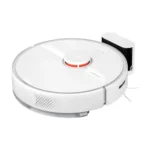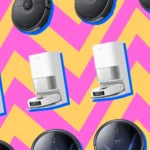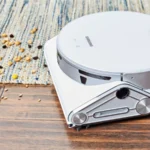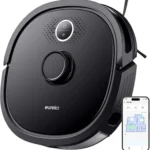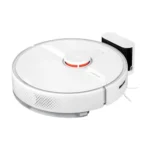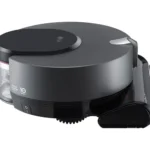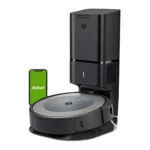Have you noticed that your smart vacuum cleaner is not cleaning as effectively as it used to? Are you experiencing connection problems with the device? One of the potential reasons for this might be dirty or faulty Wi-Fi sensors. These tiny sensors play a crucial role in connecting your smart vacuum cleaner to your home Wi-Fi network, enabling you to control the device remotely via a mobile app. However, over time, Wi-Fi sensors can accumulate dust and become damaged, leading to connectivity issues and reduced cleaning performance. Don’t worry, though – cleaning and replacing your Wi-Fi sensors is a straightforward process that you can easily do at home with the right tools and a little bit of know-how. Keep reading to learn more about this essential maintenance task!
Why Clean and Replace Wi-Fi Sensors?
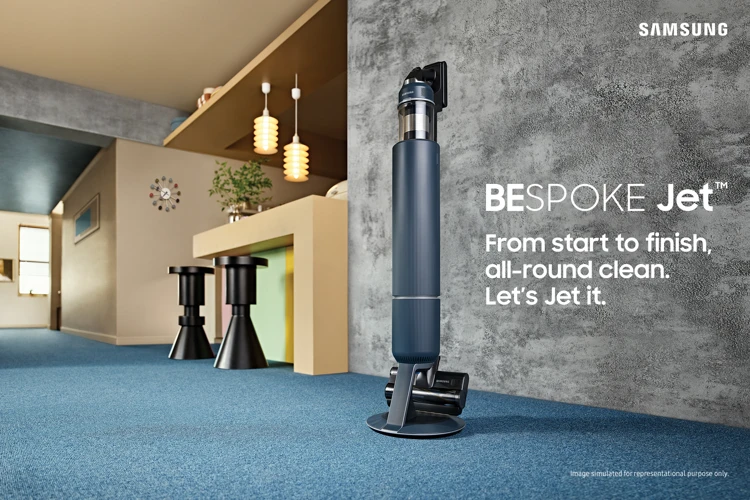
Keeping your smart vacuum cleaner operating at its optimal level is essential in maintaining a clean and healthy home. As these intelligent devices continue to evolve, they heavily rely on Wi-Fi sensors for efficient performance. That’s why it’s crucial to frequently clean and replace these sensors. Neglecting to do so can lead to malfunctions and a decrease in productivity. In this article, we will discuss what Wi-Fi sensors are, why they need to be regularly cleaned and replaced, and the tools required for doing so. Additionally, we will provide useful tips for maintaining optimal Wi-Fi sensor performance. By implementing these practices, you can prolong the lifespan of your smart vacuum cleaner and have it run more smoothly. To troubleshoot problems with the Wi-Fi sensors, go to our related article.
What are Wi-Fi Sensors?
Wi-Fi sensors are a crucial part of smart vacuum cleaners that enable them to interact with other devices and operate remotely. They use Wi-Fi technology to connect to the internet, allowing users to control the vacuum cleaner through their smartphones or other mobile devices.
Table: What are Wi-Fi Sensors?
| Wi-Fi Sensors | Description |
| — | — |
| Function | Enable smart vacuum cleaners to connect to the internet |
| Technology | Uses Wi-Fi technology to connect to other devices |
| Benefits | Allows users to control the vacuum cleaner remotely |
| Importance | Crucial for the functionality of smart vacuum cleaners |
| Maintenance | Requires regular cleaning and occasional replacement for optimal performance |
Maintaining the performance of the Wi-Fi sensors is crucial for the overall functionality of the smart vacuum cleaners. In case the sensors are damaged, users may face difficulty in operating the device remotely. It is also important to maintain the software of the smart vacuum cleaners and keep them updated for optimal performance. For more tips on keeping your smart vacuum’s Wi-Fi running smoothly, check out our article on 5 Tips for Extending Your Smart Vacuum Wi-Fi. Additionally, you can read about the importance of software updates in our article The Importance of Smart Vacuum Software Updates.
Why they need to be cleaned and replaced?
Over time, wi-fi sensors on smart vacuum cleaners collect dust and debris that can interfere with their ability to function properly. When this happens, it can cause the vacuum cleaner to run less efficiently or even stop working altogether. To ensure optimal performance, regularly cleaning and replacing the wi-fi sensors is essential.
Here are some reasons why wi-fi sensors need to be cleaned and replaced:
- Dust and dirt can accumulate on the sensors, which can cause them to malfunction.
- Over time, the sensors may become damaged or broken, which can cause the vacuum cleaner to stop working.
- Regular cleaning and replacement of the sensors ensures that the vacuum cleaner continues to perform well and accurately collect data.
Not cleaning and replacing the wi-fi sensors can lead to a host of problems, including reduced cleaning efficiency and difficulty connecting to the vacuum cleaner’s app. In the worst-case scenario, the vacuum cleaner may break down completely, and replacing the sensors could be more expensive than if they were regularly maintained.
To prolong the lifespan of your smart vacuum cleaner’s wi-fi sensors, follow the tips outlined in 5 Tips for Extending Smart Vacuum Wi-Fi. Remember to clean and replace the sensors on a regular basis to avoid any problems and keep your vacuum cleaner running smoothly.
Tools required for cleaning and replacing Wi-Fi Sensors
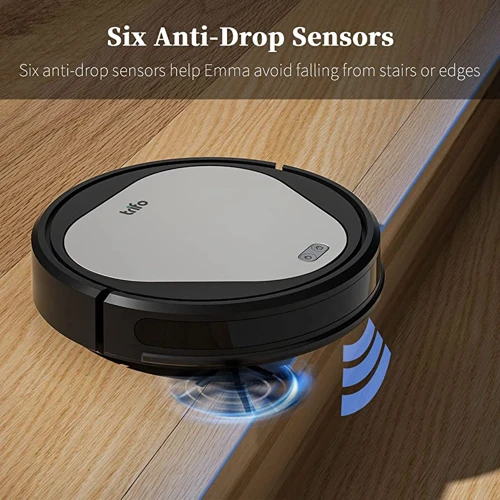
In order to clean and replace the Wi-Fi sensors on your smart vacuum cleaner, you will need a few tools to get the job done properly. First and foremost, you will need a soft cloth that is gentle enough not to scratch the sensors but tough enough to remove any dirt or grime that has built up on them over time. A microfiber cloth is ideal for this purpose, as it can effectively trap dirt and dust without leaving any residue.
Additionally, you may want to use a can of compressed air to blow away any dust or debris that may have settled on the sensors. This can be especially helpful if your vacuum cleaner has been sitting in storage for a while or if it hasn’t been used in some time.
You should also have access to the vacuum cleaner’s instruction manual, as this will provide a detailed guide on how to locate and remove the Wi-Fi sensors. This information may also be available online if you no longer have the physical manual.
Finally, if you need to replace the Wi-Fi sensors altogether, you will need to order a replacement sensor from the manufacturer or an authorized dealer. Be sure to confirm the make and model of your vacuum cleaner before placing your order to ensure that you receive the correct replacement part.
With the right tools, cleaning and replacing Wi-Fi sensors on your smart vacuum cleaner can be done quickly and easily, helping to ensure that your vacuum cleaner continues to operate at peak performance.
How to Clean Wi-Fi Sensors
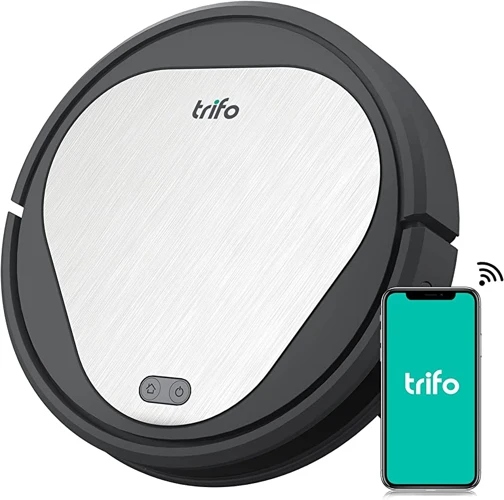
Cleaning Wi-Fi sensors on your smart vacuum cleaner is crucial for ensuring optimal performance. Over time, dirt and debris can accumulate on the sensors, hindering their ability to detect obstacles and navigate your home efficiently. While the process of cleaning these sensors may seem daunting, it is actually quite simple and can be done with just a few basic tools. In this section, we will guide you through the step-by-step process of cleaning your Wi-Fi sensors on your smart vacuum cleaner. So, roll up your sleeves and let’s get started!
Step 1: Turn off the Vacuum Cleaner
Before starting the process of cleaning or replacing the Wi-Fi sensors on your smart vacuum cleaner, it is important to ensure that the device is turned off. This is crucial for your safety, as well as for the safety of the device itself.
To turn off the vacuum cleaner, locate the power button on the device. Press and hold the button until the device shuts down completely. It is important to make sure that the device is not just in standby mode, but is completely turned off before proceeding with the next steps.
Why is it important to turn off the vacuum cleaner?
Turning off the vacuum cleaner is important as it eliminates the risk of electric shock during the cleaning or replacement process. It also ensures that the sensors are not damaged by power surges or other electrical issues that may arise during the process.
What if the vacuum cleaner doesn’t turn off?
If your vacuum cleaner doesn’t turn off, unplug it from the power source immediately. Do not attempt to continue with the cleaning or replacement process until the device is completely turned off.
Turning off the vacuum cleaner is a crucial first step in cleaning or replacing the Wi-Fi sensors on a smart vacuum cleaner. It ensures the safety of the person performing the task, as well as the device itself.
Step 2: Locate the Wi-Fi Sensors
To clean or replace the Wi-Fi sensors on your smart vacuum cleaner, you need to first locate them. This might seem like a daunting task, but it is actually quite simple. Follow the steps below to easily locate the Wi-Fi sensors on your vacuum cleaner:
- Step 1: Turn your vacuum cleaner off and unplug it from the power source. This is an important safety precaution that you should always take before working on any electrical device.
- Step 2: Take a look at your vacuum cleaner’s user manual to find out where the Wi-Fi sensors are located. Depending on the brand and model of your vacuum cleaner, the sensors could be located in different places. If you don’t have the user manual, you can usually find a digital version on the manufacturer’s website.
- Step 3: Once you have an idea of where the sensors are located, physically inspect your vacuum cleaner. Look for small, rectangular or circular panels on the body of the vacuum cleaner. These panels are usually discreetly hidden on the side or back of the vacuum cleaner.
- Step 4: If you’re having trouble locating the Wi-Fi sensors, use a flashlight to illuminate the body of the vacuum cleaner. This will make it easier to spot small panels or buttons that may be difficult to see with the naked eye.
- Step 5: Once you’ve located the Wi-Fi sensors, take note of their position and how they are attached to the vacuum cleaner. This will be useful information if you need to replace the sensors in the future.
By following these steps, you can easily locate the Wi-Fi sensors on your smart vacuum cleaner. Once you know where they are, you’ll be able to clean or replace them with confidence.
Step 3: Clean the Wi-Fi Sensors with a Soft Cloth
To clean the Wi-Fi sensors on your smart vacuum cleaner, you will need a soft cloth. Follow these steps to ensure a proper clean:
- Step 1: Take the soft cloth and gently wipe the exterior of the Wi-Fi sensors. Make sure to remove any dust, dirt, or debris that may be present. Be very careful not to apply too much pressure as the sensors are delicate and can be easily damaged.
- Step 2: If there is any visible dirt or debris on the sensors, use a microfiber cloth to gently remove them. Avoid using any harsh chemicals or abrasive materials as these may damage the sensors.
- Step 3: Pay special attention to any crevices or hard-to-reach places on the sensors, as these areas can often accumulate more dirt and debris. Use a soft-bristled brush to gently remove any dirt or debris from these areas.
- Step 4: Once you have cleaned the sensors thoroughly, set the soft cloth aside and proceed to clean the dustbin and filters.
Remember to be gentle and cautious when cleaning the Wi-Fi sensors. Too much force or cleaning with abrasive materials can damage the sensors and impair their functioning.
Step 4: Clean the Dustbin and Filters
Clean the Dustbin and Filters
In order to maintain the optimal performance of your smart vacuum cleaner, it’s important to clean the dustbin and filters regularly. Over time, the dustbin and filters can become clogged with dirt and debris, which can cause the vacuum cleaner to lose suction power and reduce the efficiency of the Wi-Fi sensors.
Here are the steps to clean the dustbin and filters:
| Step 1: | Turn off the vacuum cleaner and unplug it from the power source. This is important for safety reasons. |
| Step 2: | Locate the dustbin and remove it from the vacuum cleaner. The dustbin is usually located on the top or side of the vacuum cleaner, depending on the model. |
| Step 3: | Empty the contents of the dustbin into a trash bin. Use a soft cloth or brush to remove any remaining debris from the dustbin. |
| Step 4: | Remove the filters from the vacuum cleaner. Most smart vacuum cleaners have two filters: a pre-filter and a HEPA filter. Check the manufacturer’s instructions to determine how to remove the filters from your specific model. |
| Step 5: | Clean the filters with a soft brush or cloth. Be gentle when cleaning the filters to avoid damaging them. If the filters are very dirty, you can wash them with water and mild soap. Let the filters dry completely before reinserting them into the vacuum cleaner. |
| Step 6: | Reinsert the filters into the vacuum cleaner. Make sure they are properly seated and secure before continuing. |
By regularly cleaning the dustbin and filters of your smart vacuum cleaner, you can ensure that it works efficiently and effectively. Also, don’t forget to clean the Wi-Fi sensors to get the most of your smart vacuum cleaner’s features.
Next, we will discuss how to replace Wi-Fi sensors in case cleaning isn’t enough to restore the performance of the smart vacuum cleaner.
Step 5: Turn the Vacuum Cleaner On
Once you have cleaned or replaced the Wi-Fi sensor, it is important to turn the vacuum cleaner on and make sure that everything is working properly. Here are the steps to follow:
- Make sure that the vacuum cleaner is OFF before plugging it in.
- Double-check that the dustbin and filters are securely in place.
- Press the power button to turn on the vacuum cleaner.
- Listen for any unusual sounds, such as grinding or whirring.
- If the vacuum cleaner sounds normal, test the Wi-Fi sensor by connecting it to your smartphone or smart home device.
- If the vacuum cleaner is still not working correctly, double-check that the Wi-Fi sensor is installed correctly and try again.
- If you are still experiencing issues, refer to the manufacturer’s instructions or contact customer support for assistance.
It is important to thoroughly test the Wi-Fi sensor to ensure that it is functioning properly. By connecting it to your smartphone or smart home device, you can ensure that the sensor is picking up the correct signals and performing its required functions. If you are still experiencing issues, it may be best to contact customer support for assistance. Remember, proper maintenance and replacement of Wi-Fi sensors is essential for the optimal performance of your smart vacuum cleaner.
How to Replace Wi-Fi Sensors
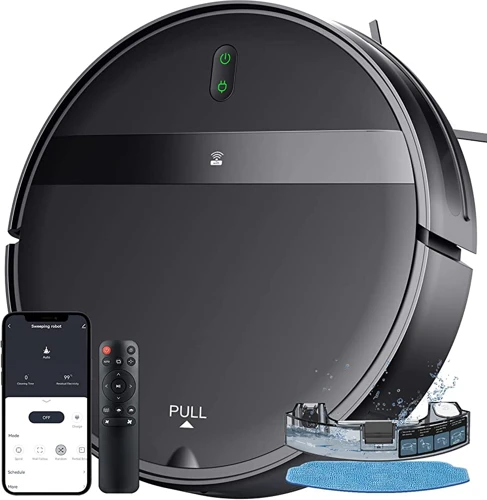
Replacing Wi-Fi sensors on your smart vacuum cleaner may seem like a daunting task, but it’s a straightforward process that can significantly improve the performance of your device. If you need to replace your vacuum cleaner’s Wi-Fi sensors, don’t worry. With the right tools and a bit of patience, you can do it easily. Here are the steps to follow for replacing Wi-Fi sensors on your smart vacuum cleaner.
Step 1: Order a Replacement Wi-Fi Sensor
Ordering a replacement Wi-Fi sensor is an essential step in replacing the faulty one. Before you start ordering the new sensor, make sure the model and brand of your smart vacuum cleaner.
You can order the replacement Wi-Fi sensor from the manufacturer’s website, where you can find a list of authorized dealers, or you can purchase it from an online store that specializes in vacuum cleaner accessories. Make sure that the new sensor is compatible with your device before making the purchase.
To help you out in making an informed decision, you can check the product specifications and customer reviews on the website. The table below shows some of the popular online stores where you can order a replacement Wi-Fi sensor for your smart vacuum cleaner.
| Online Store | URL |
|---|---|
| Amazon | https://www.amazon.com/ |
| Walmart | https://www.walmart.com/ |
| Best Buy | https://www.bestbuy.com/ |
| Newegg | https://www.newegg.com/ |
Before making the order, pay attention to the delivery time, the shipping costs, and the return policy of the online store. It is better to choose a store that offers quick delivery and has a reasonable return policy in case the sensor is not compatible or faulty.
Step 2: Turn off the Vacuum Cleaner
Before you begin to clean or replace the Wi-Fi sensors on your smart vacuum cleaner, it’s important to make sure the device is turned off to avoid any electrical accidents. Here’s how to turn off your vacuum cleaner safely:
| Step | Action |
| 2.1 | Make sure the vacuum cleaner is switched off using the power button. |
| 2.2 | Unplug the device from the power source for an extra level of safety. |
| 2.3 | Allow the vacuum cleaner to cool down for at least 30 minutes before proceeding to minimize the risk of burns or injuries. |
It is important to emphasize the significance of turning off and unplugging the vacuum cleaner before continuing to work on it. Forgetting this basic safety measure can lead to severe accidents and injuries, which is why being mindful of the steps is crucial. After waiting for your device to cool down, you can proceed to the next step with confidence, knowing you have taken the necessary precautions to protect yourself.
Step 3: Locate and Remove the Old Wi-Fi Sensor
Locating and removing the old Wi-Fi sensor is a crucial step in replacing it with a new one. Make sure you have turned off the vacuum cleaner and have all the necessary tools ready before proceeding with this step. Here are the detailed steps for locating and removing the old Wi-Fi sensor:
| Step 1: | Locate the old Wi-Fi sensor. It is usually located on the back or sides of the vacuum cleaner. Check the user manual for the exact location of the sensor. |
| Step 2: | Remove any screws or clips that are holding the sensor in place. Use a screwdriver or pliers to carefully remove the screws or clips without damaging the sensor or the vacuum cleaner. |
| Step 3: | Gently pull the old Wi-Fi sensor out of its socket. Be careful not to use too much force or to damage any of the wires or components connected to the sensor. |
Once you have removed the old Wi-Fi sensor, it is important to properly dispose of it or recycle it if possible. Do not throw it in the trash as it may contain hazardous materials. Check with your local recycling center for proper disposal procedures.
Replacing the old Wi-Fi sensor with a new one will improve the performance and connectivity of your smart vacuum cleaner, especially if the old sensor was faulty or damaged. Follow the next steps to complete the replacement process.
Step 4: Insert the New Wi-Fi Sensor
Step 4: Inserting the New Wi-Fi Sensor
Now that you have removed the old Wi-Fi sensor from your smart vacuum cleaner, it’s time to insert the new one. Follow these steps to ensure a successful replacement:
- Attach the new sensor to the vacuum cleaner: Make sure the new sensor is the same model as the old one and that it fits securely into the designated slot. Firmly press the sensor into place until you hear a click, indicating that it has been properly inserted.
- Reassemble the vacuum cleaner: Once the new sensor is securely in place, reattach any parts or screws that were removed during the disassembly process. Make sure everything is tightened to the appropriate level.
- Turn on the vacuum cleaner: Plug in your vacuum cleaner and turn it on to ensure that the new sensor is working properly. If the vacuum cleaner turns on without any issues, that means the new sensor has been successfully installed.
- Test the Wi-Fi connectivity: Open the accompanying app or website and test the Wi-Fi connectivity of the smart vacuum cleaner. Make sure it is properly detecting and responding to commands from the control hub. If everything is working correctly, congratulations! You have successfully replaced the Wi-Fi sensor on your smart vacuum cleaner.
It’s important to note that if you encounter any issues during the replacement process, don’t hesitate to reach out to the manufacturer for assistance. While replacing a Wi-Fi sensor may seem daunting, with the right tools and guidance, it can be a simple and straightforward process.
Step 5: Turn the Vacuum Cleaner On
After completing the cleaning or replacement process of your Wi-Fi sensors on your smart vacuum cleaner, it’s time to turn on the device to see if everything is in order. Here are a few things to consider before pressing the power button:
- Double-check: Before turning on the vacuum cleaner, make sure that all components and sensors are securely in place.
- Clear the dustbin: If you performed a cleaning, ensure that the dustbin is empty and properly re-attached.
- Check filter placement: For cleaning purposes, you probably removed the filter as well. Ensure you have placed it back correctly.
Once you have performed these checks, it’s time to turn the vacuum cleaner on. When the device starts up, listen to any unusual sounds. If you hear anything unusual or unsettling, stop the device, and double-check everything. Also, keep an eye on the sensors to make sure Wi-Fi connectivity is operational.
After everything is in place, and the device is operating correctly, test Wi-Fi connectivity by using your smartphone or tablet. This ensures that your smart vacuum cleaner can now send you alerts and notifications regularly.
Always double-check the vacuum cleaner components and sensors before pressing the power button. Ensure that the dustbin is clear, filters are properly installed, and listen for any strange sounds. If anything seems amiss, double-check the components and sensors before testing Wi-Fi connectivity. By following these steps, you can properly clean or replace your vacuum cleaner’s Wi-Fi sensors and maintain optimal performance.
Tips for Maintaining Optimal Wi-Fi Sensor Performance
As technology continues to advance, smart vacuum cleaners have become increasingly common in households around the world. These next-generation machines are designed to make our lives easier, but they can only do so if they are properly maintained. Wi-Fi sensors are an important component of smart vacuum cleaners, responsible for helping the device navigate around your home. To ensure optimal performance, it’s important to follow a few simple tips for keeping your Wi-Fi sensors clean and functioning well. By taking these steps, you can keep your vacuum cleaner running smoothly and make sure it always performs at its best.
Tip 1: Clean Wi-Fi Sensors Regularly
One of the most important tips for maintaining optimal Wi-Fi sensor performance is to clean them regularly. Dust and debris can easily build up on the sensors, causing them to malfunction or operate less efficiently.
To clean the sensors, first turn off the vacuum cleaner. Then, locate the Wi-Fi sensors and gently wipe them with a soft cloth or microfiber towel to remove any dirt or dust. It’s important to avoid using water or harsh chemicals, as these can damage the sensors.
In addition to cleaning the sensors, it’s also important to clean the dustbin and filters on a regular basis. This will help prevent debris and dirt from clogging the sensors and other components of the vacuum cleaner.
Cleaning the Wi-Fi sensors regularly can help ensure that they continue to function at their best. However, it’s important to note that over time, sensors may wear out or become damaged. In these cases, it may be necessary to replace the sensors entirely.
Regular cleaning, combined with proper maintenance and replacement when necessary, can help ensure that your smart vacuum cleaner’s Wi-Fi sensors operate at their best. Check out the table below for a brief summary of Tip 1:
| Tip 1: | Clean Wi-Fi Sensors Regularly |
| Steps: |
|
| Benefits: | Optimal sensor performance, prevents sensor damage and malfunctions |
Tip 2: Use the Vacuum Cleaner on a Regular Basis
Regular use of the vacuum cleaner can greatly enhance the life of the Wi-Fi sensors installed in it. The more frequently you use the vacuum cleaner, the less buildup it will have, and the less frequently you would need to clean or replace the sensors. Here are some tips for using the vacuum cleaner on a regular basis:
- Set a Regular Cleaning Schedule: Set a regular cleaning schedule for your home, so that you can vacuum frequently without having to think about it. This will help prevent significant buildup and prolong the life of your Wi-Fi sensors.
- Vary the Vacuuming Patterns: Varying the vacuuming patterns is important to ensure that all areas of the house are covered. This not only ensures that the Wi-Fi sensors on the vacuum cleaner are used evenly, but also leads to cleaner floors.
- Adjust the Vacuum Cleaner Settings: Different flooring types require different suction levels. Adjust the vacuum cleaner settings according to the type of flooring you have to ensure optimal cleaning performance and protect Wi-Fi sensors from potential damages.
- Don’t Overfill the Dustbin: Vacuum cleaners have a limit to the amount of debris they can hold at a time, and overfilling the dustbin can cause the vacuum cleaner to malfunction. Regularly empty the dustbin so that the vacuum cleaner operates at optimal performance and the Wi-Fi sensors are not exposed to excessive debris for too long.
Following these tips can help to maintain the optimal performance of the Wi-Fi sensors in the vacuum cleaner, prevent damages, minimize the need for cleaning or replacement, and keep your home clean and hygienic.
Tip 3: Replace Wi-Fi Sensors Annually
After cleaning, maintaining and regularly using the vacuum cleaner, it is essential to remember that some parts have a lifespan, and it needs to be replaced periodically. One of such parts is the Wi-Fi sensor. Even with regular cleaning, it is vital to know when it is time to replace them.
Here are some signs that the Wi-Fi sensors need to be replaced:
- The vacuum cleaner keeps dropping the Wi-Fi connection, even after following all the troubleshooting steps provided by the manufacturer.
- The vacuum cleaner is struggling to map the room or identify obstacles.
- The vacuum cleaner is not moving correctly, or it is moving in the wrong direction.
- There is visible damage on the sensors or if the sensors have been exposed to water or moisture.
If any of these signs are visible, it is time to replace the Wi-Fi sensors.
It is recommended that Wi-Fi sensors should be replaced annually. This ensures that they keep performing optimally, and they are not wearing out too much due to prolonged use. Replacing the Wi-Fi sensors annually also helps in avoiding the need for costly repairs or replacement of the entire vacuum cleaner.
Additionally, checking the warranty of the vacuum cleaner is also important because some manufacturers offer replacement Wi-Fi sensors for free during the warranty period. It is crucial to take advantage of such offers because it helps in saving money and ensures that the vacuum cleaner is in top-notch condition.
In conclusion, replacing Wi-Fi sensors annually can help avoid damage, prolong the vacuum cleaner’s life, and ensure it continues to function optimally. Paying attention to the signs and acting fast when they appear can save money and avoid costly repairs or replacement of the entire vacuum cleaner.
Conclusion
In conclusion, maintaining the Wi-Fi sensors on your smart vacuum cleaner is crucial for optimal performance. Dirty or damaged sensors can decrease the vacuum cleaner’s efficiency, which can be frustrating for homeowners.
By regularly cleaning and replacing the Wi-Fi sensors, you can ensure that your smart vacuum cleaner is functioning properly and meeting your cleaning needs. Remember to turn off the vacuum cleaner before cleaning or replacing the sensors and always use a soft cloth to avoid damaging them.
Additionally, keeping the dustbin and filters clean can help maintain Wi-Fi sensor performance. Utilizing the vacuum cleaner on a regular basis and replacing the Wi-Fi sensors annually can also prolong the effectiveness of your device.
Taking care of your smart vacuum cleaner is an investment in your home’s cleanliness and your own convenience. Implementing these simple tips will help you avoid unnecessary frustrations and keep your vacuum cleaner operating at peak performance.
Frequently Asked Questions
1. How often should I clean the Wi-Fi sensors on my smart vacuum cleaner?
You should aim to clean your Wi-Fi sensors at least once a week to maintain optimal performance.
2. Is it necessary to replace my Wi-Fi sensors every year?
No, it’s not necessary to replace them annually, but it’s a good rule of thumb to ensure maximum efficiency of your smart vacuum cleaner.
3. What can I use to clean the Wi-Fi sensors?
A soft cloth or microfiber cloth is ideal for cleaning Wi-Fi sensors, as it won’t scratch the surface or harm the sensitivity of the sensor.
4. Can I clean my Wi-Fi sensors with water?
It’s not recommended to clean the sensors with water as it may damage the electronics of the sensor, and could potentially harm other parts of your smart vacuum cleaner if not dried properly.
5. How do I know if my Wi-Fi sensors need cleaning or replacement?
If you notice decreased performance, erratic behavior, or an increased frequency of error messages on your smart vacuum cleaner, there’s a chance your Wi-Fi sensors need cleaning or replacement.
6. Can I replace the Wi-Fi sensors myself?
Yes, replacing the Wi-Fi sensors is usually a straight-forward process which can be accomplished by following the steps outlined in this article.
7. Where do I order replacement Wi-Fi sensors?
It’s recommended to order replacement sensors from the manufacturer of your smart vacuum cleaner to ensure the compatibility and quality of the replacement sensor.
8. How long does it take to replace the Wi-Fi sensors?
Replacing the Wi-Fi sensors usually only takes a few minutes; however, the time may vary depending on the specific model of your smart vacuum cleaner.
9. Are there any safety precautions I need to follow when cleaning or replacing Wi-Fi sensors?
It’s important to turn off the vacuum cleaner and unplug it from the power source before cleaning or replacing the Wi-Fi sensors to avoid electrical shock or damage to the vacuum cleaner.
10. What are some signs that my Wi-Fi sensors need replacement instead of just cleaning?
If you’ve already attempted cleaning your Wi-Fi sensors and you’re still experiencing problems, or if the sensors are visibly damaged or malfunctioning, it’s likely that they need to be replaced.

